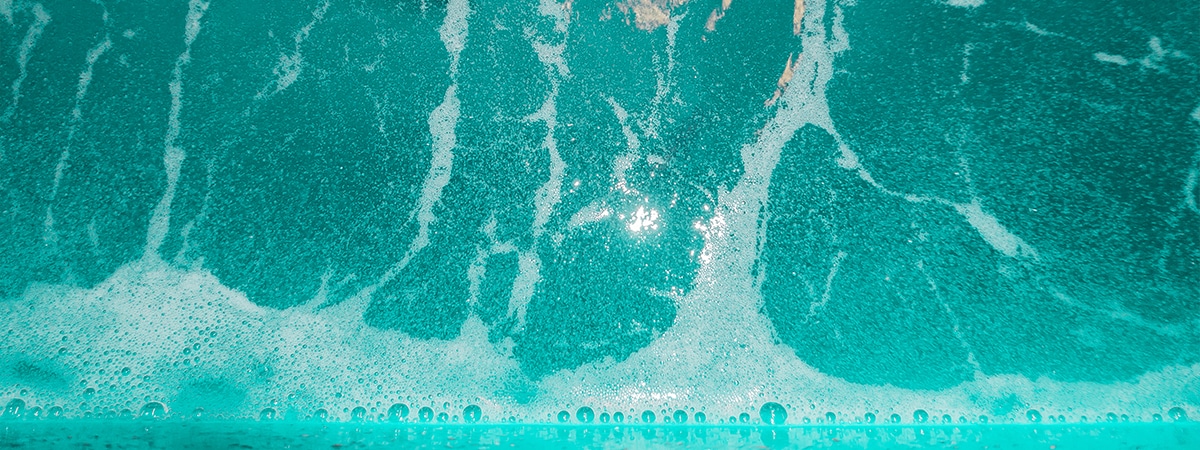Efficient oxygen input by flow pump

Each species of fish has its own preferences for perfect flow conditions: some fish species prefer permanent currents and „surf“ in them, others only move to spawn in currents and others prefer to live in calm waters. The background is the oxygen demand that every fish has. However, one species needs more, the other less O2. A stronger current means that more oxygen can reach the gills. In a recirculation system, therefore, the right water movement must be chosen, and the required amount of oxygen provided, depending on the species used. The aim is thereby to achieve both the flow and the oxygen input as cost-efficiently as possible.
Oxygen saturation in recirculation systems
The use of flow pumps promotes the well-being of the animals and prevents stress, especially during periods of high activity and thus high oxygen consumption (e.g. during feeding). The maximum solubility of oxygen in water depends on the water temperature and can be found in tables. In principle, more oxygen can be dissolved in colder water than in warm water. In our closed recirculation system, the water temperature average is about 22°C. At this temperature about 9 mg/l oxygen can be dissolved, which corresponds to a saturation of 100%. For many animals, however, values of about 6 mg/l of dissolved oxygen are sufficient with the right current, sometimes even less depending on the species. This corresponds to less than 70% saturation. Therefore, we regulate the oxygen in the SEAWATER Cube with the help of our specially developed flow pumps and the use of technical oxygen between 70 and 100%. The oxygen supply is controlled by our automation software.
Efficient oxygen supply through Venturi effect
With the help of the SEAWATER flow pump we iuse oxygen in a particularly efficient and cost-effective way. We use the Venturi effect, in which the water flow is first pumped into the nozzle and then accelerated by a constriction. This creates a negative pressure which can be used to suck in a medium (ambient air or oxygen) through a separate opening on the nozzle. The medium forms particularly fine bubbles when flowing out of the nozzle, which have a high exit velocity and thus travel a long distance in the water. This gives the oxygen introduced a lot of time to dissolve completely in the water and thus be available to the fish.
Increase of the well-being of fish by specific current conditions
A side effect of the oxygen input by means of flow pumps is the targeted flow that can be achieved with the ejected water jet of the venturi injector. It creates a so-called circular flow in the cohorts, which is slowest in the middle of the tank and fastest towards the tank edge. Within the current, each animal has the possibility to choose its favorite spot. Thus, the current supports the natural swimming behavior of the animals.
Flow in the holding tank for better water purification
Often the fish also move as a shoal with the current through the tank, which makes the water movement very fast and turbulent. This also helps to transport all particles and excrements that collect in the water to our filter technology from time to time. This not only saves the plant operator daily working time in cleaning the tank, but also prevents the formation of biofilms.
With the SEAWATER Cube, we place special emphasis on creating optimal living and growth conditions for the fish during breeding. The use of a flow pump contributes to this. In addition to optimal flow conditions and efficient oxygen input, technical single-flow pumps promote water quality in aquacultures. We are convinced that species-appropriate husbandry and clear plant water have a very strong impact on the quality of the final product. Therefore, we are constantly working on the further development of our system and research in future-oriented techniques to make aquaculture in closed recirculation systems attractive and thus make a sustainable contribution to the protection of natural stocks.
Referenzen
— http://www.aquarienfische.info/seiten/stroemng.htm, recalled 23th January 2020
—https://www.umwelt.sachsen.de/umwelt/wasser/1416.htm, recalled 17th February 2020
— Picture by SEAWATER Cubes